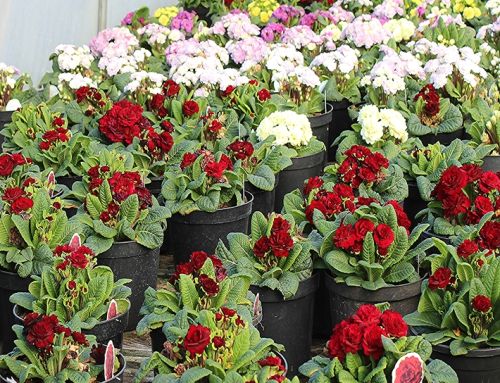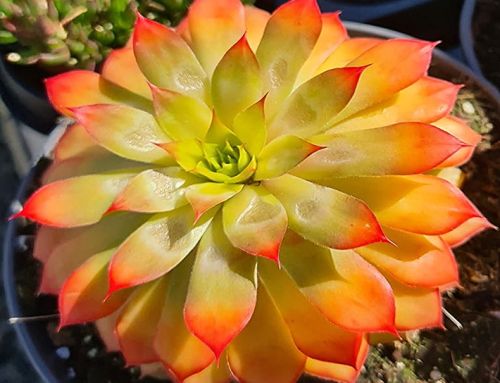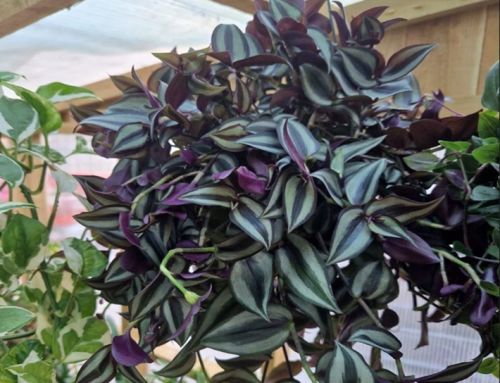Hardy Cyclamen
Whilst wandering around the woodland garden on a grey autumn day I spotted an area of bare soil just underneath some shrubs that looked as if it could do with some brightening up. It is always quite difficult to fill some of the overlooked areas with stunning seasonal detail, but I instantly thought the perfect plant to give the area a refreshing lift is Cyclamen. It is a woodland classic, a compact and elegant perennial ideal for growing in dappled shade, under trees, shrubs, a ferny corner or in containers to add a zing to your garden when little else is in flower.
Cyclamen is a genus of over 20 perennials grown from corms that lay dormant over the summer months, waiting for the rains of autumn for them to burst in to life again. Both Cyclamen hederifolium and Cyclamen coum are wonderful, hardy, ground cover varieties. Both have RHS AGM awards (Award of Garden Merit). AGM is the RHS (Royal Horticultural Society) seal of approval that the plant perform reliably in the garden.
 Cyclamen hederifolium is the earlier flowering plant. Also known as the Ivy-leaved cyclamen. Its delicate white, pink or ruby pink flowers on leafless stalks appearing in August and September, the leaves follow the flowers. The intricate marbled pattern on the hederifolium leaves ensure that every plant is unique. Even after the flowers have gone, its foliage is still a joy to behold.
Cyclamen hederifolium is the earlier flowering plant. Also known as the Ivy-leaved cyclamen. Its delicate white, pink or ruby pink flowers on leafless stalks appearing in August and September, the leaves follow the flowers. The intricate marbled pattern on the hederifolium leaves ensure that every plant is unique. Even after the flowers have gone, its foliage is still a joy to behold.
Cyclamen coum flower later, normally from January to March, however they have been known to flower as early as October. The flower colour of Cyclamen coum can vary from white, through all shades of pink and purple. Its leaves are a dark green kidney shape and often silver and white marked.
Once pollinated the flowers fade and each rapidly form a seedpod, the stalk of the cyclamen then corkscrews around it and swells. Once the seedpod is ready the stalk relaxes, the seedpod splits spilling its seeds a little way from the mother plant. These seeds are cunningly covered in a sweet sticky substance that attracts birds and insects who then carry the seeds elsewhere….nature is very clever. Birds will eat the seeds and then they are re-distributed through their droppings, whereas insects such as ants will carry them away to a safe place, eat the sugars and leave the seed to germinate.
Planting
In general, Cyclamen like partial shade and fairly well drained reasonably fertile soil. Although they will tolerate sun. They do not like being planted too deep, aim for the top of the corms to be just under soil level. Autumn is a good time for planting before the ground frosts start. Dig a hole wide enough for the corm and about 5-10 cm deep, position the corm into the hole with the top side facing upwards, cover with soil and water thoroughly. They will need occasional watering in the first autumn, but after that, once the corm has established they should get all they need from nature.
Propagation
The best way is to just let nature get on with it as the Cyclamen has developed a very nifty way to ensure that its seed is distributed efficiently. The wonderful drifts of Cyclamen seen in the wild is testament to this. They can only be propagated by seed and just sprinkling it may not work as the ants and birds are likely to move them to other locations. But if you want to propagate yourself it is best to harvest the seed pod and sow the seeds as soon as possible after they ripen in seed trays. Place John Innes seed compost with about 10% mix of Perlite into a seed tray or shallow pan. Thinly sow the seed on top of the compost and perlite mix and cover with a thin layer (1cm) of horticultural grit. Place the container outside and keep in a shady place, ensuring that the compost remains moist. Some seedling should start to appear after a couple of months, however some may take much longer, even up to a year. Keep the young plants in the trays for a second year to allow the corms to develop and then they can be planted when dormant between May and August.
Pests
The only real pest of Cyclamen is vine weevil, especially those grown in pots. Vine weevil can be treated with a biological control of Nematodes. Nematodes are microscopic worms that feed and multiply inside the vine weevil larvae causing death.






